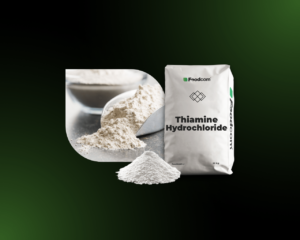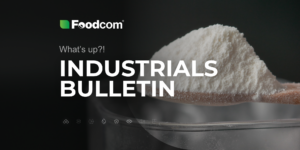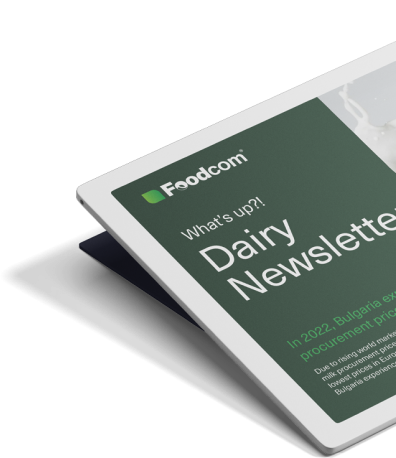- Potato protein and natural additives are gaining importance as alternative, highly digestible feed ingredients in Europe.
- The choline chloride and lysine market in Europe is facing anti-dumping regulations, which may affect the prices and availability of raw materials.
- Dextrose monohydrate and energy additives are becoming key ingredients in animal feed, supporting the growth and regeneration of livestock.
- Changes in regulations and feeding strategies are leading to a decrease in the use of soybean meal and cereals in animal feed, increasing interest in legumes.
The feed market in 2025 is undergoing a revolution! New technologies, changing regulations and a growing interest in alternative protein sources are shaping the future of the industry. Potato protein is gaining prominence, choline chloride and lysine are becoming the focus of EU regulations, and dextrose monohydrate is driving livestock performance. At the same time, impending changes in soybean meal supply and feeding strategies could change the market dramatically. What challenges and opportunities await producers? Check out the latest trends that will determine the future of feed!
Potato protein 80%
As of February 2025, the potato protein market is experiencing rapid growth, driven by increasing demand for sustainable and highly digestible protein sources in feed. New technologies are enabling better utilisation of this ingredient and innovative methods, such as genetic modification of potatoes to produce specialised proteins, are opening up new opportunities for the feed industry. Potato protein is increasingly used in the feeding of monogastric animals, offering a complete amino acid profile. Forecasts indicate that interest in this raw material will grow, especially in the European plant feed market.
Choline chloride 60%
In February 2025, the choline chloride 60% market in Europe remains in the spotlight due to the ongoing anti-dumping investigation. The European Commission, after initiating an investigation in October 2024, decided on 20 January 2025 to register imports of this raw material from China, which could be a step towards the imposition of anti-dumping duties in the future. Choline chloride, a key feed additive that aids fat metabolism in livestock, remains an important component of the market and possible import restrictions could affect its price and availability in Europe.
Dextrose monohydrate
The global market for dextrose monohydrate is growing rapidly, with its value, currently at $7.22 billion, expected to reach $14.25 billion by 2034, corresponding to a compound annual growth rate (CAGR) of 7.85%. In the feed sector, dextrose monohydrate is gaining prominence as an ingredient to provide easily digestible energy for livestock, aid recovery and improve animal condition. The growing demand for this raw material is due to the trend of increased use of energy supplements in feed, especially during periods of stress and intensive fattening. The increase in production and interest in this ingredient indicates that dextrose monohydrate will remain a key component of modern feed formulations.
Carob powder
Natural feed additives are becoming increasingly popular, and carob powder is consolidating its position in the industry. Thanks to its high fiber content and natural sugars, it promotes intestinal health and improves feed palatability, making it an attractive ingredient especially in the feeding of young animals such as piglets and calves. Global trends indicate an increase in the use of carob in feeds, especially in Europe, where its properties are increasingly appreciated in formulations based on natural ingredients.
NEWS
European feed manufacturers are warning of a possible 10% shortage of soybean meal in 2025 as a consequence of EU regulations on deforestation-free supply chains (EUDR). Annual demand for this key feed ingredient is around 30 million tonnes and the new regulations could restrict imports from third countries, causing costs to rise by up to €1.5 billion a year. Soybean supplies from Nigeria, India and China, which have been classified as having a high risk of disruption, are in a particularly difficult situation. Soya meal, which is the main source of protein in feed for poultry, pigs and dairy cattle, is difficult to replace, further complicating the feed market.
FEFAC expressed deep concern about the high anti-dumping duties imposed by the European Union on lysine imports from China, effective from 14 January 2025. The EU is currently 60% dependent on Chinese supplies and the lack of alternative sources could lead to higher prices and disruption in the feed market. The organisation warns that the decision will undermine the competitiveness of European poultry and pig producers, and is therefore calling on the European Commission to provide financial support to farmers and to recognise amino acids and vitamins as ‘critical raw materials’, which could increase the EU’s raw material independence.
![What’s up? Feed industry news! [February 2025] What’s up? Feed industry news! [February 2025]](https://foodcom.pl/wp-content/uploads/2025/02/Biuletyn-feed-1520x760.png)



![Co słychać? Wiadomości z branży spożywczej! [Styczeń 2025] Co słychać? Wiadomości z branży spożywczej! [Styczeń 2025]](https://foodcom.pl/wp-content/uploads/2025/01/food-biuletyn-300x150.png)
![Co słychać? Wiadomości z branży paszowej! [Grudzień 2024] Co słychać? Wiadomości z branży paszowej! [Grudzień 2024]](https://foodcom.pl/wp-content/uploads/2024/12/feed-na-bloga-300x150.png)

